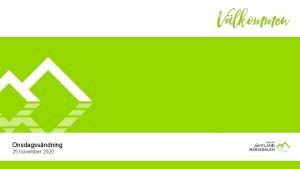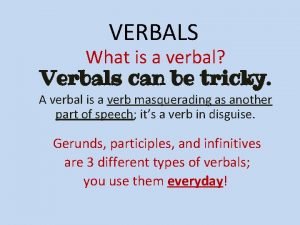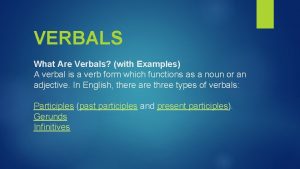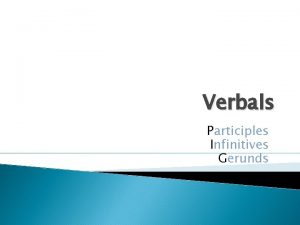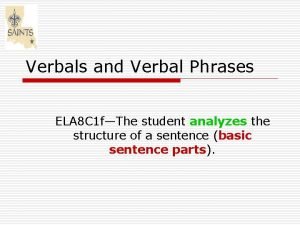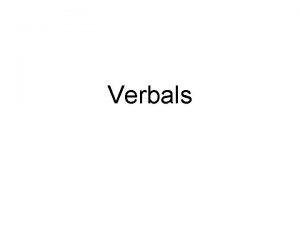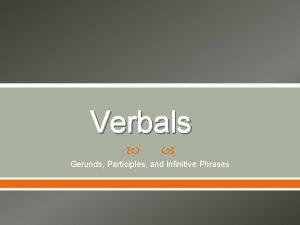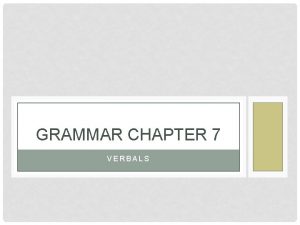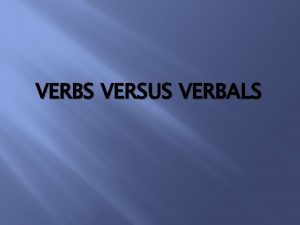Verbals VERBALS USED RHETORICALLY Verbal Types There are

Verbals VERBALS USED RHETORICALLY

Verbal Types There are three types of verbals: Participles Gerunds Infinitives

Participle (Ending in –ing or –ed) A word that looks like a verb but is used as an adjective (modify nouns). Examples: The crying baby reached for his mother. (Crying, and for of the verb cry, modifies or describes the noun baby. ) Screaming, Matt jumped away from the spider. (Screaming, a form of the verb scream, modifies the noun Matt. )

Participle (cont. ) The amused teacher chuckled at the student’s joke. (Amused, a form of the verb amuse, modifies the noun teacher. ) Note: Participles and gerunds do not have helping verbs. If you see an –ing verb with a helping verb it is a verb. Example: The man is amusing the teacher.

Gerund (Ending in –ing) A word that looks like a verb but is used as a noun. Examples: Chewing with your mouth open always impresses people. (Chewing, a form of the verb chew, is the subject of the sentence. What impresses people? Chewing. ) Mark practices speaking in public. (Speaking is the direct object of the verb practices. Mark practices what? Speaking. )

Infinitive (to + verb) A word that looks like a verb but is used as a noun, adjective, or adverb. Examples: To fly far away would be wonderful. (To fly is a noun and the subject of the sentence. ) Erika is the woman to visit. (To visit is an adjective modifying the noun woman. )
- Slides: 6
